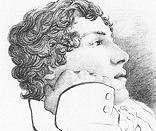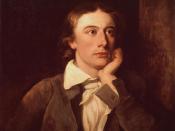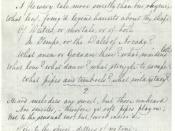John Keats "Ode on a Grecian Urn", which you just heard, demonstrates many of the characteristics of a romantic piece of literature. The form of the poem is an Ode addressed to an inanimate object. In the Romantic period, an element of Romantic poetry was a lack of convention for time and space. Through Keats poetic form, he brings to life scenes painted on a 2000-year-old urn and the spirit of the artist who created it. Anther quality of Romanticism is movement and action. By describing the still life painted onto the urn as if it were living, Keats makes it as though he is watching the scenes play out to him as he spins the urn.
Keats uses an assortment of techniques to bring life to the work and make it more enjoyable to read. Using these techniques helps keep the readers attention, while also helping the reader to better relate to the situation.
Imagery is the technique most widely used, probably because everyone can relate to it in their own way. John Keats uses imagery to make the reader truly feel what he is describing. One of Keats' examples of imagery is found at the beginning of the second stanza when he writes, "Heard melodies are sweet, but those unheard are sweeter." This leaves the reader feeling a sense of sweetness about the pipers melodies.
Irony is the discrepancy of what is expected to happen and what really does happen. "Bold Lover, never, never canst thou kiss," is ironic because generally one would think of lovers kissing ,but, these two will never be able to show their affection. Irony is a widely used technique because it has the ability to create vivid twists in the plot that make it much more exciting to read.
Hyperbole is a literary...



Ode on a grecian urn
This isnt bad, but it does require more detail and more quotes. You have not mentioned the tone of the poem or the metaphors employed.
2 out of 2 people found this comment useful.